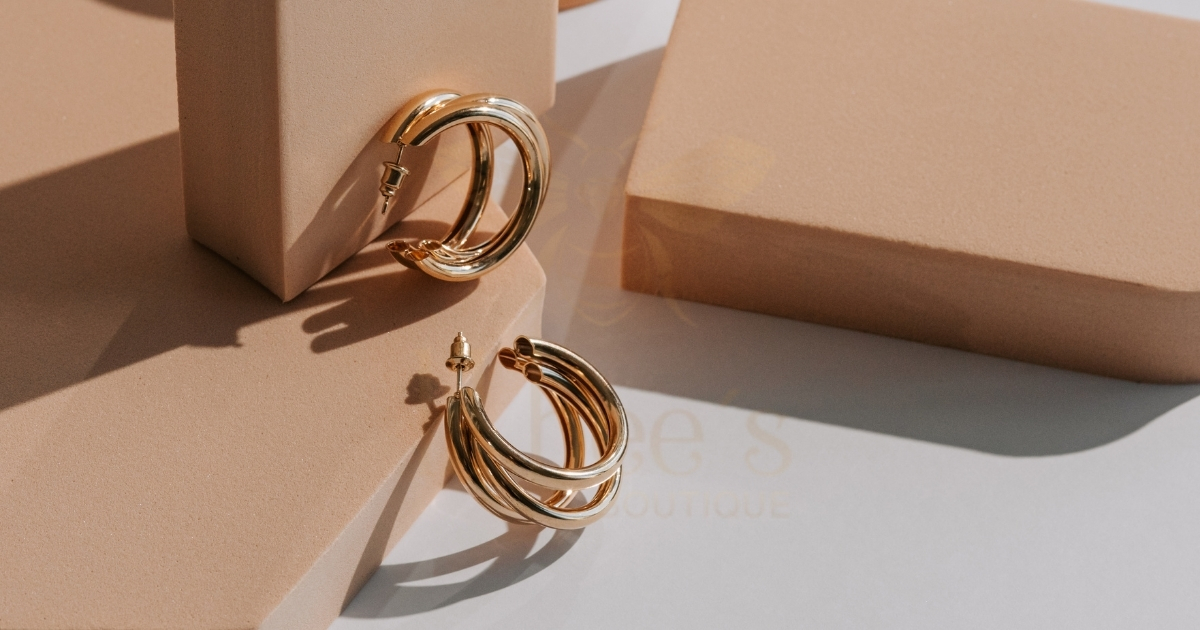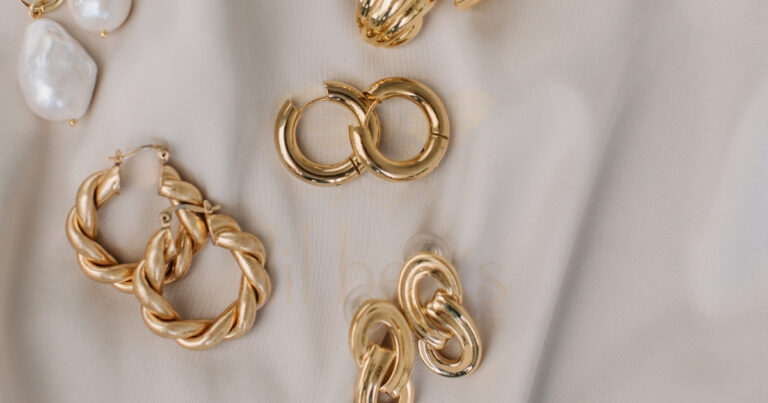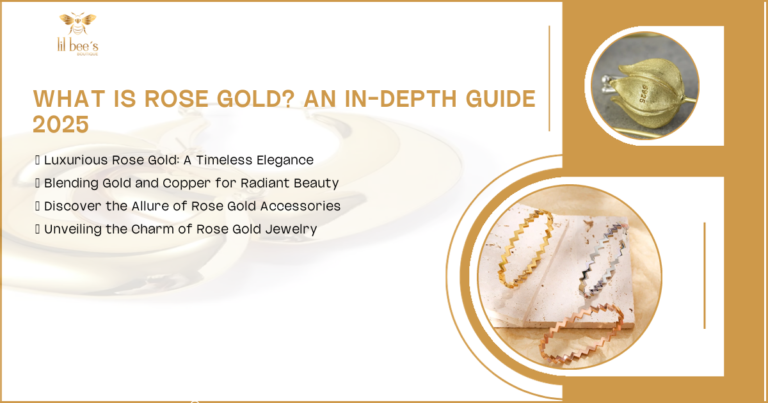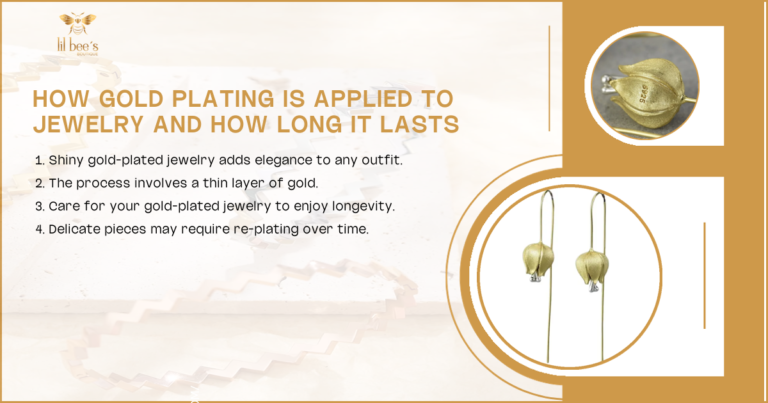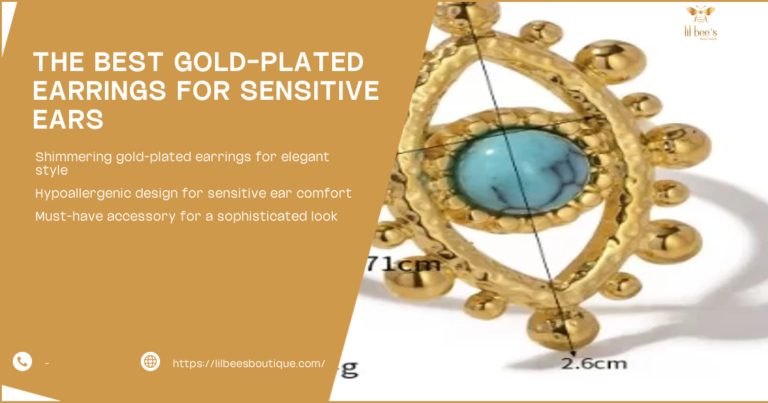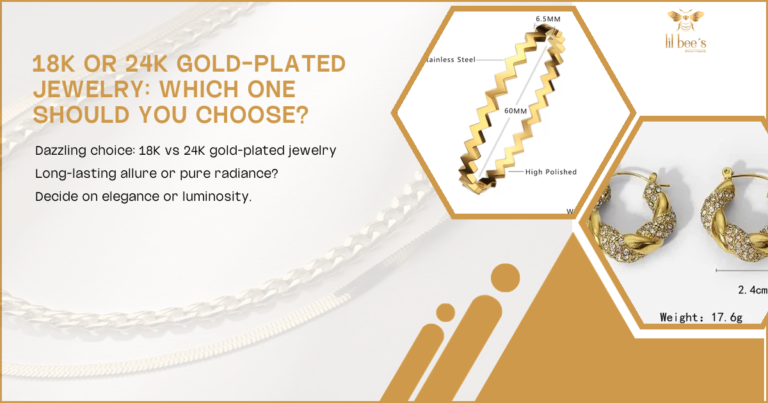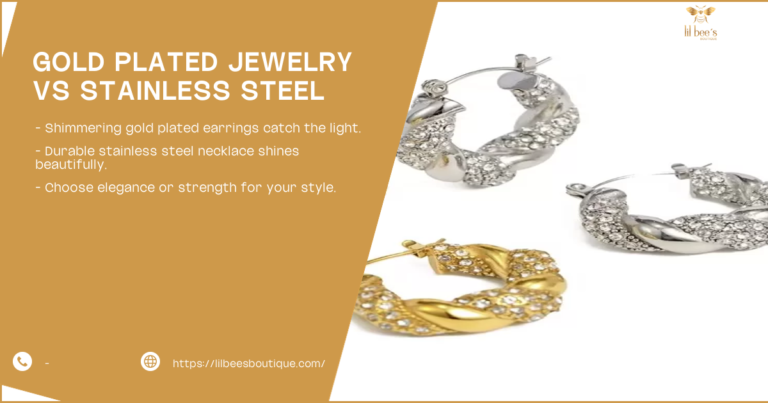Gold plated jewelry is a popular and affordable option for those who love the look of gold but don’t want to invest in solid gold pieces. However, many people experience disappointment when their beloved gold plated accessories start to lose their luster and turn copper. This article will explore the reasons behind this phenomenon and provide valuable insights on how to prevent and address the issue.
At Lil Bee’s Boutique, we understand the importance of maintaining the beauty of your jewelry. Let’s delve into the world of gold plated accessories and uncover the secrets to keeping them looking their best.
What Causes Gold Plated Jewelry to Tarnish?
Gold plated jewelry is created by applying a thin layer of gold over a base metal, often copper or brass. While this process results in a beautiful, golden appearance, it’s not permanent. Several factors can contribute to the tarnishing of gold plated jewelry:
Chemical reactions
The base metal beneath the gold plating can react with oxygen and other elements in the air, causing it to oxidize. This oxidation process can lead to discoloration and tarnishing of the jewelry.
Exposure to moisture and air
Humidity and moisture in the air can accelerate the tarnishing process. When gold plated jewelry is exposed to these elements for extended periods, it can cause the gold layer to wear away faster, revealing the base metal underneath.
Body oils and beauty products
Our skin naturally produces oils that can interact with the gold plating on jewelry. Additionally, beauty products such as lotions, perfumes, and hairsprays can contain chemicals that may react with the gold plating, causing it to deteriorate more quickly.
- Common culprits of tarnishing:
- Sweat
- Chlorine in swimming pools
- Sulfur in the air
- Acidic foods and drinks
| Factor | Impact on Gold Plated Jewelry |
| Chemical reactions | Oxidation of base metal |
| Moisture and air | Accelerated wear of gold layer |
| Body oils and beauty products | Deterioration of gold plating |
Signs of Gold Plating Wear and Discoloration
Recognizing the early signs of gold plating wear can help you take action to preserve your jewelry. Here are some indicators to watch out for:
Color changes
One of the first signs that your gold plated jewelry is turning copper is a noticeable change in color. The once vibrant golden hue may start to appear dull or take on a reddish-orange tint, indicating that the copper base is showing through.
Skin discoloration
If you notice green or black marks on your skin after wearing your gold plated jewelry, it’s a clear sign that the plating has worn off. This discoloration is caused by the oxidation of the base metal reacting with your skin.
Visible base metal
In some cases, you may be able to see patches of the underlying base metal peeking through the gold plating. This is especially common in areas that experience frequent friction, such as the inside of rings or the clasps of necklaces.
- Warning signs of gold plating wear:
- Fading or dulling of the gold color
- Uneven appearance or patchy spots
- Flaking or peeling of the gold layer
Preventing Gold Plated Jewelry from Turning CopperCaring for Different Types of Gold Jewelry
While it’s impossible to completely prevent gold plated jewelry from eventually showing signs of wear, there are several steps you can take to extend its lifespan:
Proper storage techniques
Storing your gold plated jewelry correctly is crucial for maintaining its appearance. Keep each piece in a separate compartment or wrap it in a soft cloth to prevent scratching and exposure to air.
Cleaning and maintenance tips
Regular cleaning can help remove dirt, oils, and other substances that may contribute to tarnishing. Use a soft, lint-free cloth to gently wipe your jewelry after each wear, and periodically clean it with a mild soap solution.
Avoiding exposure to harsh chemicals
Remove your gold plated jewelry before swimming, showering, or applying beauty products. Chemicals in these substances can accelerate the wear of the gold plating.
- Best practices for preserving gold plated jewelry:
- Store in a cool, dry place
- Use jewelry boxes with anti-tarnish lining
- Apply jewelry last when getting dressed
- Remove before exercising or sleeping
Extending the Life of Your Gold Plated Jewelry
If you want to keep your gold plated jewelry looking its best for as long as possible, consider these additional measures:
Reapplying protective coatings
Some jewelers offer services to apply a clear protective coating over gold plated jewelry. This extra layer can help shield the gold plating from wear and tear, extending its lifespan.
Professional replating services
When the gold plating has significantly worn off, you may opt for professional replating. This process involves applying a new layer of gold over the existing piece, restoring its original appearance.
Choosing high-quality gold plated pieces
Investing in higher quality gold plated jewelry from reputable sources like Lil Bee’s Boutique can make a significant difference. These pieces often have a thicker layer of gold plating, which can withstand wear better than cheaper alternatives.
- Factors that influence the longevity of gold plated jewelry:
- Thickness of the gold plating
- Quality of the base metal
- Frequency of wear
- Care and maintenance routine
Alternatives to Gold Plated Jewelry
If you’re concerned about the longevity of gold plated jewelry, consider these alternatives:
Solid gold options
While more expensive, solid gold jewelry doesn’t tarnish or turn copper. It’s a durable option that can last for generations with proper care.
Vermeil jewelry
Vermeil is a step up from traditional gold plating. It consists of a thick layer of gold (at least 2.5 microns) over sterling silver, offering better durability than standard gold plated pieces.
Gold-filled accessories
Gold-filled jewelry has a thicker layer of gold mechanically bonded to a base metal. It’s more durable than gold plated items and less likely to tarnish or turn copper.
- Comparison of gold jewelry options:
- Gold plated: Thin layer of gold over base metal
- Vermeil: Thick gold layer over sterling silver
- Gold-filled: Thick gold layer bonded to base metal
- Solid gold: 100% gold alloy
Caring for Different Types of Gold Jewelry 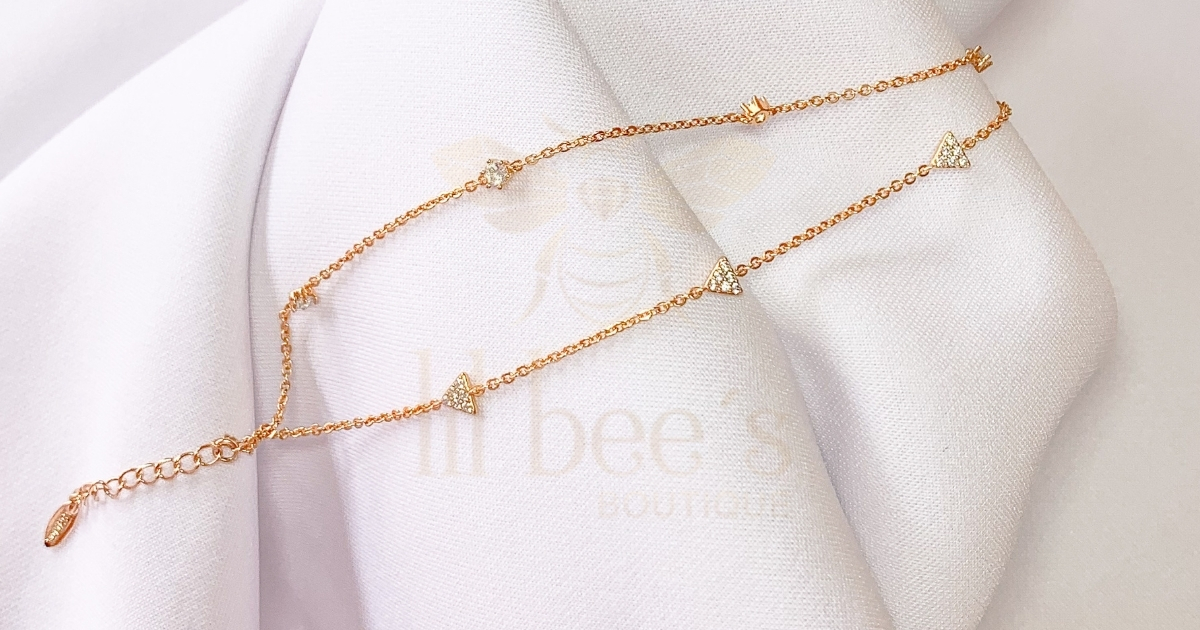
Different types of gold plated jewelry may require slightly different care approaches:
14k vs. 18k gold plated items
18k gold plated jewelry has a higher gold content and may be more resistant to tarnishing than 14k gold plated pieces. However, both require regular care to maintain their appearance.
Rose gold vs. yellow gold plating
Rose gold plating contains copper, which can make it more prone to tarnishing than yellow gold plating. Extra care may be needed to preserve the unique color of rose gold plated jewelry.
White gold plated jewelry care
White gold plating often contains rhodium, which can wear off over time. Special care and occasional replating may be necessary to maintain the bright white appearance.
- Care tips for various gold plated jewelry types:
- Use separate storage for different metal types
- Be extra cautious with rose gold plated items
- Consider rhodium replating for white gold plated pieces
Common Misconceptions About Gold Plated Jewelry
There are several myths surrounding gold plated jewelry that can lead to confusion: Pinkish precious metal is a special type of gold mixed with copper It has a warm rosy color and is used to make beautiful jewelry Karat gold differences The higher the karat number the more pure gold is in the jewelry while lower karat numbers mean less pure gold and more other metals mixed in
Gold alloy composition Plated gold selection offers affordable jewelry options that look like real gold These pieces have a thin layer of gold over a less expensive metal base Market trends forecast helps predict what people might want to buy in the future Businesses use
Luxurious gifting jewelry is fancy and expensive jewelry that people give as special presents Gentle gold accessories add a soft and elegant touch to any outfit These delicate pieces of jewelry can make you feel special without being too flashy
Durable gold coating is a special layer of gold that stays strong and shiny for a long time It protects things like jewelry and electronics from wear and tear while looking beautiful Jewelry durability comparison Different types of jewelry can last longer or break easier depending on what they are made of and how they are worn some metals like gold and platinum are stronger than others like silver
Precious metal longevity Affordable jewelry option Gold plated durability means how long the thin layer of gold on an object will last
Gold plating discoloration happens when the thin layer of gold on an object starts to wear off or change color This can make gold-plated items look less shiny and reveal the metal underneath Gold jewelry durability
- Gold plated jewelry never tarnishes: This is false. All gold plated jewelry will eventually show signs of wear.
- Gold plated jewelry is the same as gold-filled: Gold-filled jewelry has a much thicker layer of gold and is more durable than gold plated items.
- All gold plated jewelry is low quality: While some cheap gold plated jewelry exists, high-quality options are available that can last for years with proper care.
- Gold plated jewelry can’t be repaired: Many gold plated pieces can be professionally replated to restore their appearance.
How to Identify Quality Gold Plated Jewelry
When shopping for gold plated jewelry, keep these factors in mind:
- Check the plating thickness: Higher quality pieces will have a thicker gold layer, typically measured in microns.
- Look for reputable sellers: Trusted retailers like Lil Bee’s Boutique often offer better quality gold plated jewelry.
- Examine the base metal: Quality gold plated jewelry usually uses brass or copper as a base, rather than cheaper alternatives like nickel.
- Consider the manufacturing process: Electroplating generally produces a more durable finish than other plating methods.
- Read product descriptions carefully: Look for information about the plating thickness and base metal used.

